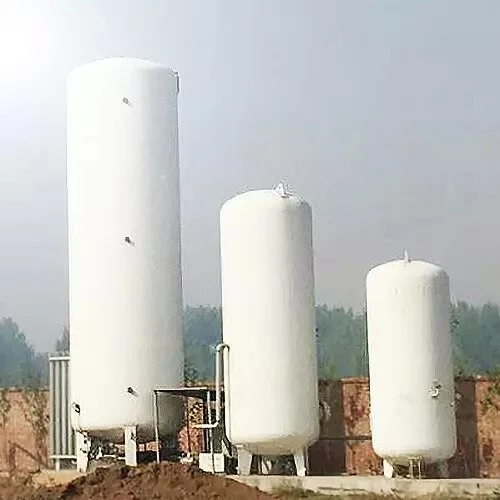Pressure Vessel Longevity: Design Strategies and Corrosion Considerations
Understanding the delicate balance between design life and service life in pressure vessels is vital. Governed by safety regulations, the design life serves as an anticipated service span marker. Yet, it's not an exact match to actual service life, serving as an estimate based on usage conditions. Users are prompted to take necessary measures when the design life of pressure vessels is exceeded.

The "design life" of a pressure vessel, denoting its expected service span, is a critical aspect. Stipulated by the "Regulations on the Safety Technical Supervision of Fixed Pressure Vessels," this design life must be clearly marked on the vessel's general design, with fatigue analysis vessels indicating the number of cycles.
It's important to understand that the design life doesn't necessarily match the actual service life; it's an estimate by the designer based on anticipated usage conditions. This information serves as a reminder to users to take necessary measures when the design life is exceeded, such as frequent thickness measurements and a shortened inspection period.
Users typically submit the specific expected service life in writing to the design unit, allowing the designer to calculate the corrosion allowance based on the service life and corrosion rate. In practice, designers often specify the design life, leading to the formula: corrosion allowance = annual corrosion rate × design life.
Optimizing Design Life: Key Considerations
When determining the design life of a container, several crucial factors should be taken into account:
1. When determining a container's design life, it's vital to carefully assess several critical factors:
Choose materials and structural designs that are appropriate for the intended purpose.
Establish a reasonable corrosion allowance to enhance longevity.
Mitigate the potential for creep deformation, especially in high-temperature conditions, and address fatigue concerns.
Factor in the construction cost of the container when making design decisions.
Evaluate the replacement cycle for loading capacity and other relevant considerations.
2. Recommended design life durations for different container types are as follows:
General containers, heat exchangers: 10 years
Fractionating towers, reactors, high-pressure heat exchangers: 20 years
Spherical containers: 25 years
Critical reaction pressure vessels (e.g., thick-walled hydrogenation reactors, ammonia synthesis converters): 30 years
For pressure vessels designed for fatigue analysis, the design drawings must clearly specify the number of cycles of alternating loads during the design life.
Optimizing Corrosion AllowanceChoose materials and structural designs that are appropriate for the intended purpose.
Establish a reasonable corrosion allowance to enhance longevity.
Mitigate the potential for creep deformation, especially in high-temperature conditions, and address fatigue concerns.
Factor in the construction cost of the container when making design decisions.
Evaluate the replacement cycle for loading capacity and other relevant considerations.
2. Recommended design life durations for different container types are as follows:
General containers, heat exchangers: 10 years
Fractionating towers, reactors, high-pressure heat exchangers: 20 years
Spherical containers: 25 years
Critical reaction pressure vessels (e.g., thick-walled hydrogenation reactors, ammonia synthesis converters): 30 years
For pressure vessels designed for fatigue analysis, the design drawings must clearly specify the number of cycles of alternating loads during the design life.
In the determination of corrosion allowance, it is essential to distinguish cases where it is unnecessary and where it should be carefully considered.
1. No corrosion allowance is needed in the following cases:
When the medium has no corrosive impact on stainless steel.
Use of base material with a reliable corrosion-resistant lining.
The sealing surface of the flange.
Heat exchange tubes, straining beams, spacer tubes, and cross baffles in shell and tube heat exchangers.
The outer surface of the container and external components effectively protected from environmental corrosion with paint.
Tray decks, packing, and similar components.
2. Corrosion allowance is necessary in the following cases:
The cylinder, head, connector tube, man (hand) hole, and internal components in contact with the working medium.
Compliance with special provisions or actual use experience specified in process system specialty or engineering design documents.
For pressure vessels experiencing uniform corrosion, determine corrosion allowance based on the product of expected service life and corrosion rate.
Consider erosion, wear, and local corrosion of the container shell or components by the medium.
For components in contact with media on both sides, select different corrosion allowances for each working medium, superimposing them as the total corrosion allowance.
Note: The finish allowance encompasses:
a) Thinning in machining set by the manufacturer (e.g., heads).
b) Machining allowance (e.g., allowance for tube sheet and metal parts).
When the medium has no corrosive impact on stainless steel.
Use of base material with a reliable corrosion-resistant lining.
The sealing surface of the flange.
Heat exchange tubes, straining beams, spacer tubes, and cross baffles in shell and tube heat exchangers.
The outer surface of the container and external components effectively protected from environmental corrosion with paint.
Tray decks, packing, and similar components.
2. Corrosion allowance is necessary in the following cases:
The cylinder, head, connector tube, man (hand) hole, and internal components in contact with the working medium.
Compliance with special provisions or actual use experience specified in process system specialty or engineering design documents.
For pressure vessels experiencing uniform corrosion, determine corrosion allowance based on the product of expected service life and corrosion rate.
Consider erosion, wear, and local corrosion of the container shell or components by the medium.
For components in contact with media on both sides, select different corrosion allowances for each working medium, superimposing them as the total corrosion allowance.
Note: The finish allowance encompasses:
a) Thinning in machining set by the manufacturer (e.g., heads).
b) Machining allowance (e.g., allowance for tube sheet and metal parts).
Ensuring vessel longevity involves optimizing design life through considerations like material choice and corrosion allowance. Recommended design life durations offer practical guidance. Determining corrosion allowance requires discernment, distinguishing cases where it's unnecessary. This comprehensive approach establishes a robust foundation for designing pressure vessels that endure.

